Zhongyi Hu
A fast score-based search algorithm for maximal ancestral graphs using entropy
Feb 07, 2024

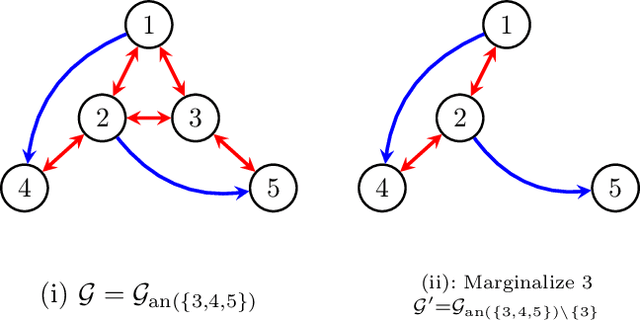
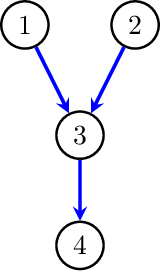
Abstract:\emph{Maximal ancestral graph} (MAGs) is a class of graphical model that extend the famous \emph{directed acyclic graph} in the presence of latent confounders. Most score-based approaches to learn the unknown MAG from empirical data rely on BIC score which suffers from instability and heavy computations. We propose to use the framework of imsets \citep{studeny2006probabilistic} to score MAGs using empirical entropy estimation and the newly proposed \emph{refined Markov property} \citep{hu2023towards}. Our graphical search procedure is similar to \citet{claassen2022greedy} but improved from our theoretical results. We show that our search algorithm is polynomial in number of nodes by restricting degree, maximal head size and number of discriminating paths. In simulated experiment, our algorithm shows superior performance compared to other state of art MAG learning algorithms.
UNet#: A UNet-like Redesigning Skip Connections for Medical Image Segmentation
May 24, 2022



Abstract:As an essential prerequisite for developing a medical intelligent assistant system, medical image segmentation has received extensive research and concentration from the neural network community. A series of UNet-like networks with encoder-decoder architecture has achieved extraordinary success, in which UNet2+ and UNet3+ redesign skip connections, respectively proposing dense skip connection and full-scale skip connection and dramatically improving compared with UNet in medical image segmentation. However, UNet2+ lacks sufficient information explored from the full scale, which will affect the learning of organs' location and boundary. Although UNet3+ can obtain the full-scale aggregation feature map, owing to the small number of neurons in the structure, it does not satisfy the segmentation of tiny objects when the number of samples is small. This paper proposes a novel network structure combining dense skip connections and full-scale skip connections, named UNet-sharp (UNet\#) for its shape similar to symbol \#. The proposed UNet\# can aggregate feature maps of different scales in the decoder sub-network and capture fine-grained details and coarse-grained semantics from the full scale, which benefits learning the exact location and accurately segmenting the boundary of organs or lesions. We perform deep supervision for model pruning to speed up testing and make it possible for the model to run on mobile devices; furthermore, designing two classification-guided modules to reduce false positives achieves more accurate segmentation results. Various experiments of semantic segmentation and instance segmentation on different modalities (EM, CT, MRI) and dimensions (2D, 3D) datasets, including the nuclei, brain tumor, liver, and lung, demonstrate that the proposed method outperforms state-of-the-art models.
Identifying Malicious Web Domains Using Machine Learning Techniques with Online Credibility and Performance Data
Feb 23, 2019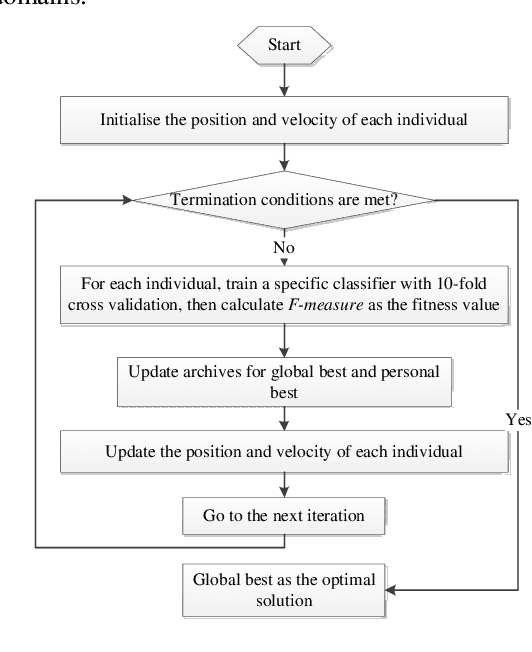
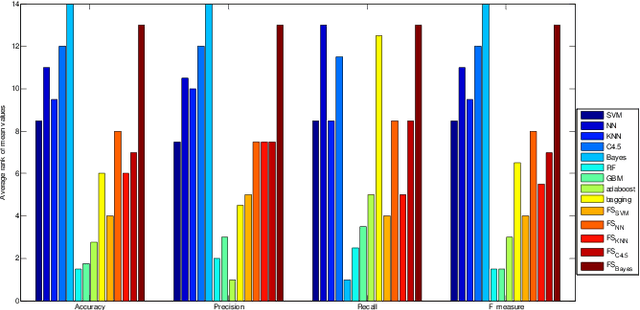
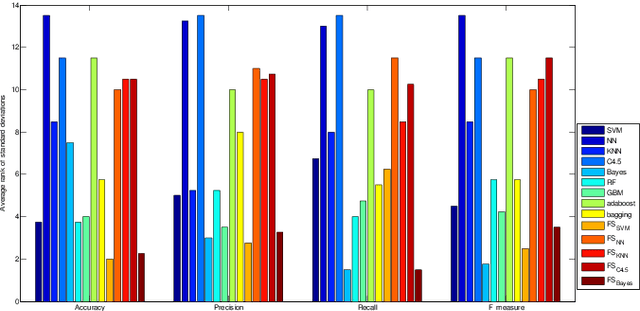

Abstract:Malicious web domains represent a big threat to web users' privacy and security. With so much freely available data on the Internet about web domains' popularity and performance, this study investigated the performance of well-known machine learning techniques used in conjunction with this type of online data to identify malicious web domains. Two datasets consisting of malware and phishing domains were collected to build and evaluate the machine learning classifiers. Five single classifiers and four ensemble classifiers were applied to distinguish malicious domains from benign ones. In addition, a binary particle swarm optimisation (BPSO) based feature selection method was used to improve the performance of single classifiers. Experimental results show that, based on the web domains' popularity and performance data features, the examined machine learning techniques can accurately identify malicious domains in different ways. Furthermore, the BPSO-based feature selection procedure is shown to be an effective way to improve the performance of classifiers.
* 10 pages, conference
Malicious Web Domain Identification using Online Credibility and Performance Data by Considering the Class Imbalance Issue
Oct 19, 2018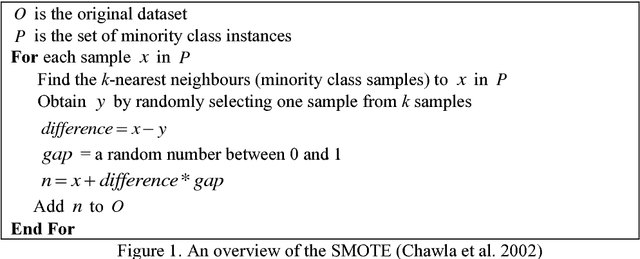

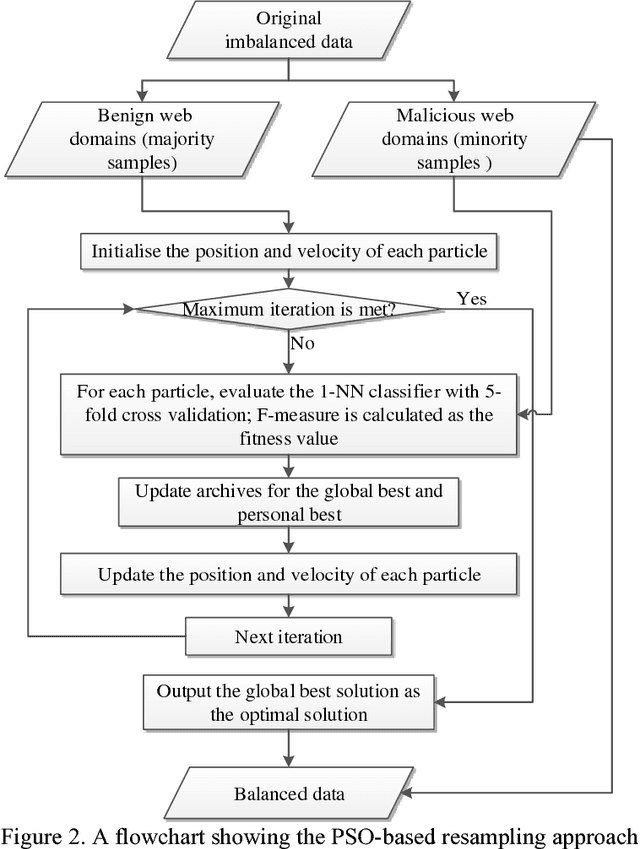
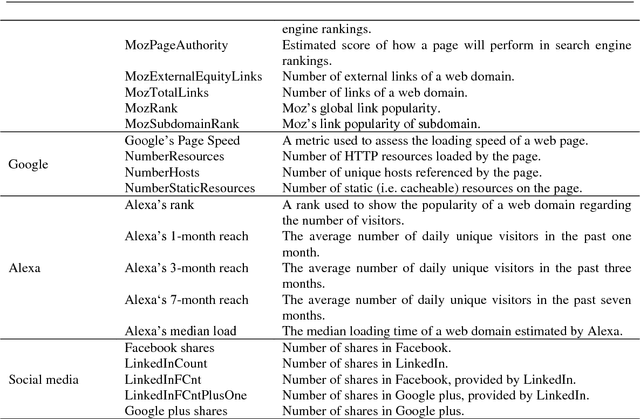
Abstract:Purpose: Malicious web domain identification is of significant importance to the security protection of Internet users. With online credibility and performance data, this paper aims to investigate the use of machine learning tech-niques for malicious web domain identification by considering the class imbalance issue (i.e., there are more benign web domains than malicious ones). Design/methodology/approach: We propose an integrated resampling approach to handle class imbalance by combining the Synthetic Minority Over-sampling TEchnique (SMOTE) and Particle Swarm Optimisation (PSO), a population-based meta-heuristic algorithm. We use the SMOTE for over-sampling and PSO for under-sampling. Findings: By applying eight well-known machine learning classifiers, the proposed integrated resampling approach is comprehensively examined using several imbalanced web domain datasets with different imbalance ratios. Com-pared to five other well-known resampling approaches, experimental results confirm that the proposed approach is highly effective. Practical implications: This study not only inspires the practical use of online credibility and performance data for identifying malicious web domains, but also provides an effective resampling approach for handling the class imbal-ance issue in the area of malicious web domain identification. Originality/value: Online credibility and performance data is applied to build malicious web domain identification models using machine learning techniques. An integrated resampling approach is proposed to address the class im-balance issue. The performance of the proposed approach is confirmed based on real-world datasets with different imbalance ratios.
* 20 pages
Interval Forecasting of Electricity Demand: A Novel Bivariate EMD-based Support Vector Regression Modeling Framework
Jun 15, 2014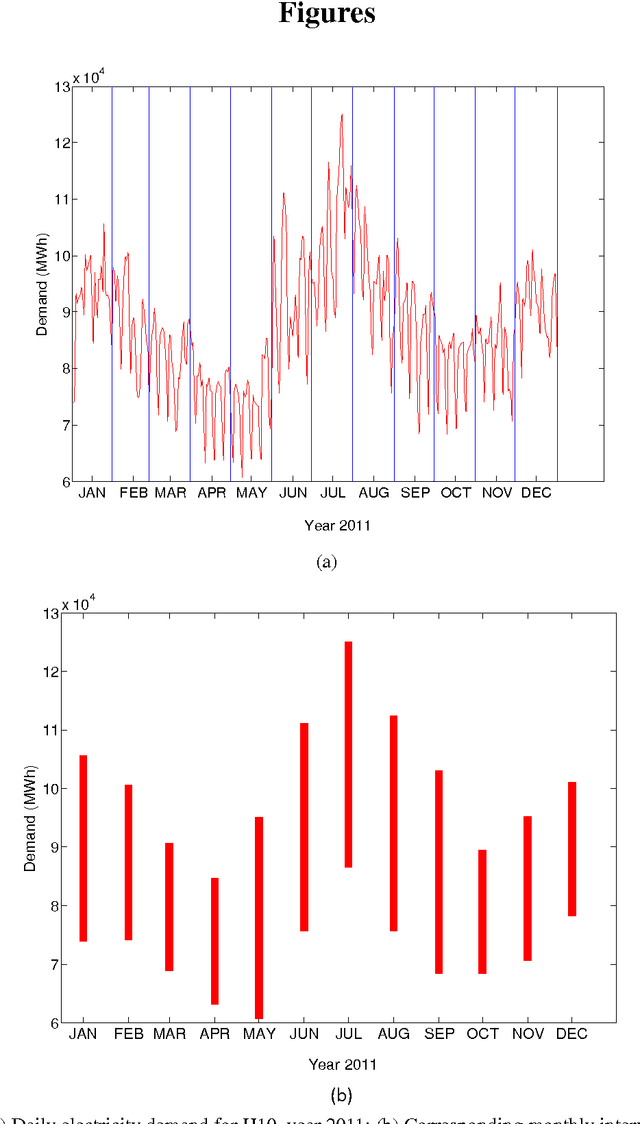
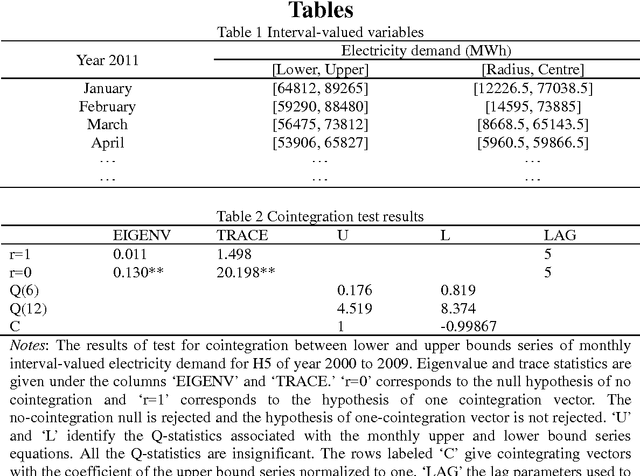
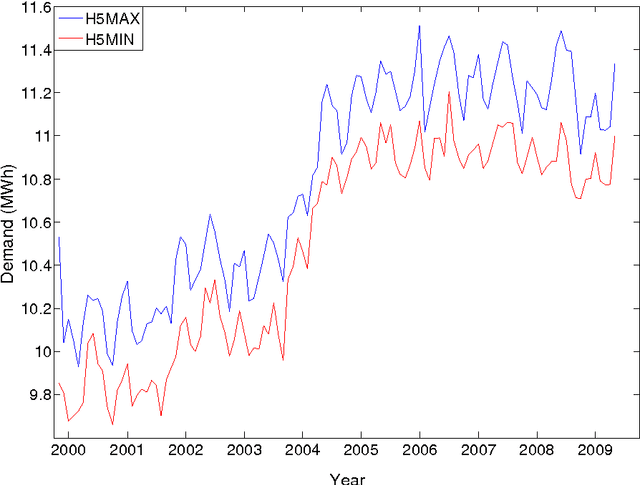
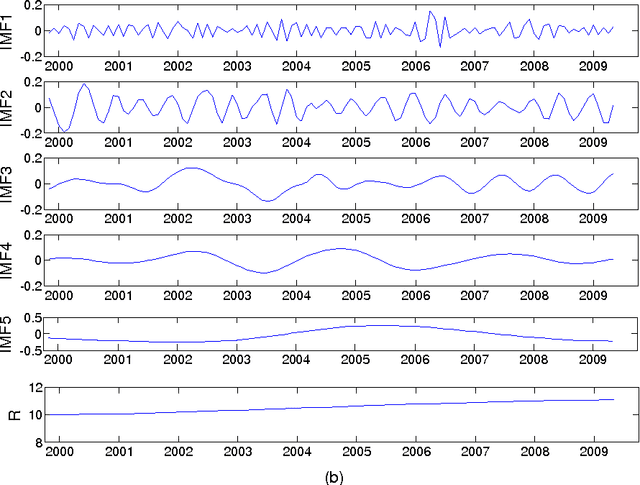
Abstract:Highly accurate interval forecasting of electricity demand is fundamental to the success of reducing the risk when making power system planning and operational decisions by providing a range rather than point estimation. In this study, a novel modeling framework integrating bivariate empirical mode decomposition (BEMD) and support vector regression (SVR), extended from the well-established empirical mode decomposition (EMD) based time series modeling framework in the energy demand forecasting literature, is proposed for interval forecasting of electricity demand. The novelty of this study arises from the employment of BEMD, a new extension of classical empirical model decomposition (EMD) destined to handle bivariate time series treated as complex-valued time series, as decomposition method instead of classical EMD only capable of decomposing one-dimensional single-valued time series. This proposed modeling framework is endowed with BEMD to decompose simultaneously both the lower and upper bounds time series, constructed in forms of complex-valued time series, of electricity demand on a monthly per hour basis, resulting in capturing the potential interrelationship between lower and upper bounds. The proposed modeling framework is justified with monthly interval-valued electricity demand data per hour in Pennsylvania-New Jersey-Maryland Interconnection, indicating it as a promising method for interval-valued electricity demand forecasting.
Multi-Step-Ahead Time Series Prediction using Multiple-Output Support Vector Regression
Jan 11, 2014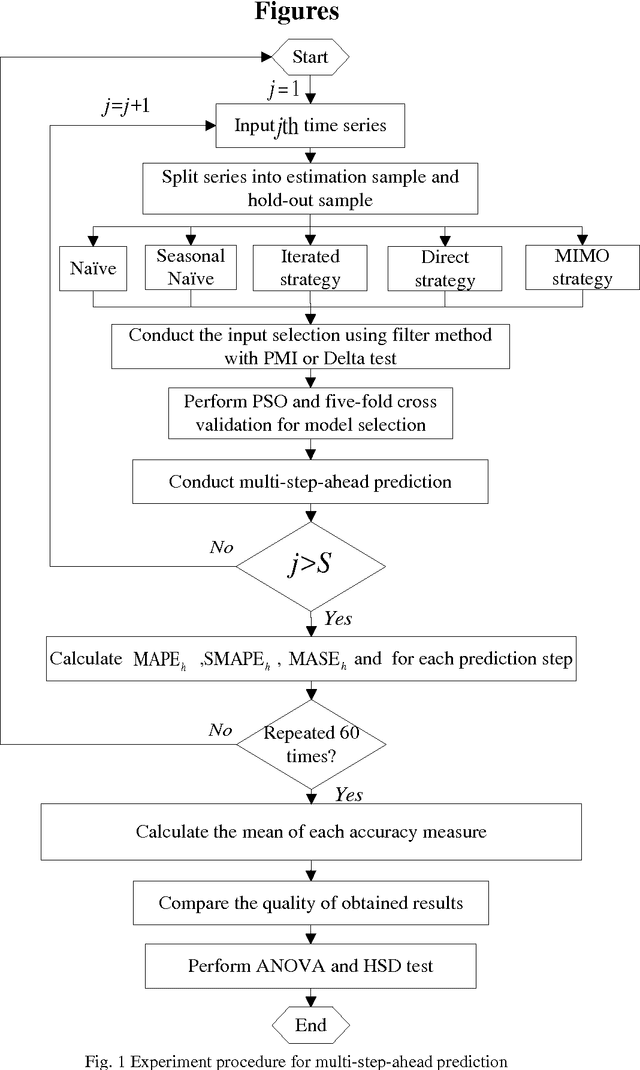
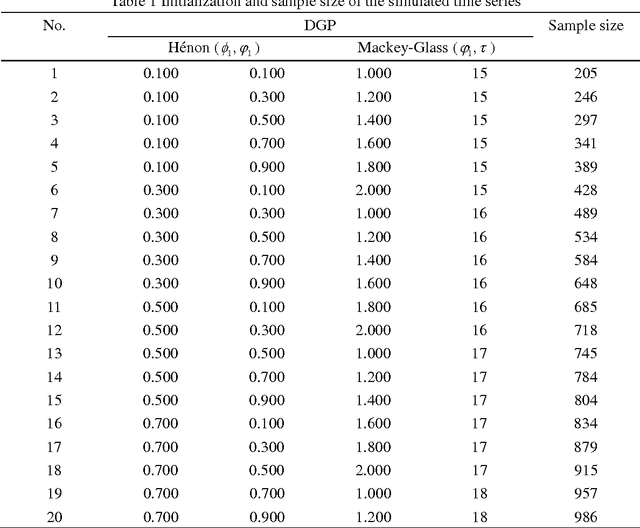
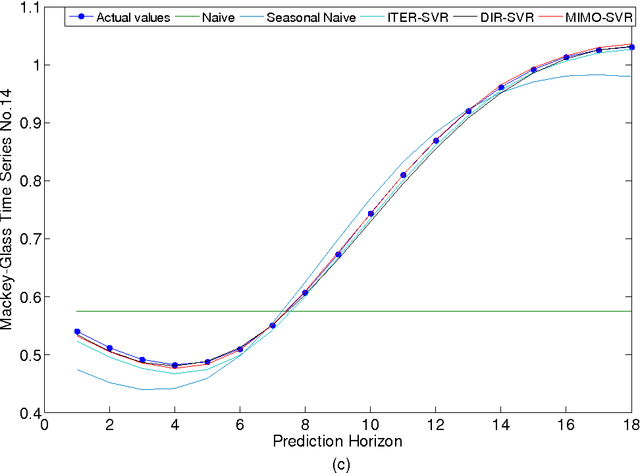

Abstract:Accurate time series prediction over long future horizons is challenging and of great interest to both practitioners and academics. As a well-known intelligent algorithm, the standard formulation of Support Vector Regression (SVR) could be taken for multi-step-ahead time series prediction, only relying either on iterated strategy or direct strategy. This study proposes a novel multiple-step-ahead time series prediction approach which employs multiple-output support vector regression (M-SVR) with multiple-input multiple-output (MIMO) prediction strategy. In addition, the rank of three leading prediction strategies with SVR is comparatively examined, providing practical implications on the selection of the prediction strategy for multi-step-ahead forecasting while taking SVR as modeling technique. The proposed approach is validated with the simulated and real datasets. The quantitative and comprehensive assessments are performed on the basis of the prediction accuracy and computational cost. The results indicate that: 1) the M-SVR using MIMO strategy achieves the best accurate forecasts with accredited computational load, 2) the standard SVR using direct strategy achieves the second best accurate forecasts, but with the most expensive computational cost, and 3) the standard SVR using iterated strategy is the worst in terms of prediction accuracy, but with the least computational cost.
Does Restraining End Effect Matter in EMD-Based Modeling Framework for Time Series Prediction? Some Experimental Evidences
Jan 11, 2014Abstract:Following the "decomposition-and-ensemble" principle, the empirical mode decomposition (EMD)-based modeling framework has been widely used as a promising alternative for nonlinear and nonstationary time series modeling and prediction. The end effect, which occurs during the sifting process of EMD and is apt to distort the decomposed sub-series and hurt the modeling process followed, however, has been ignored in previous studies. Addressing the end effect issue, this study proposes to incorporate end condition methods into EMD-based decomposition and ensemble modeling framework for one- and multi-step ahead time series prediction. Four well-established end condition methods, Mirror method, Coughlin's method, Slope-based method, and Rato's method, are selected, and support vector regression (SVR) is employed as the modeling technique. For the purpose of justification and comparison, well-known NN3 competition data sets are used and four well-established prediction models are selected as benchmarks. The experimental results demonstrated that significant improvement can be achieved by the proposed EMD-based SVR models with end condition methods. The EMD-SBM-SVR model and EMD-Rato-SVR model, in particular, achieved the best prediction performances in terms of goodness of forecast measures and equality of accuracy of competing forecasts test.
* 28 pages
A PSO and Pattern Search based Memetic Algorithm for SVMs Parameters Optimization
Jan 09, 2014



Abstract:Addressing the issue of SVMs parameters optimization, this study proposes an efficient memetic algorithm based on Particle Swarm Optimization algorithm (PSO) and Pattern Search (PS). In the proposed memetic algorithm, PSO is responsible for exploration of the search space and the detection of the potential regions with optimum solutions, while pattern search (PS) is used to produce an effective exploitation on the potential regions obtained by PSO. Moreover, a novel probabilistic selection strategy is proposed to select the appropriate individuals among the current population to undergo local refinement, keeping a well balance between exploration and exploitation. Experimental results confirm that the local refinement with PS and our proposed selection strategy are effective, and finally demonstrate effectiveness and robustness of the proposed PSO-PS based MA for SVMs parameters optimization.
Multiple-output support vector regression with a firefly algorithm for interval-valued stock price index forecasting
Jan 09, 2014
Abstract:Highly accurate interval forecasting of a stock price index is fundamental to successfully making a profit when making investment decisions, by providing a range of values rather than a point estimate. In this study, we investigate the possibility of forecasting an interval-valued stock price index series over short and long horizons using multi-output support vector regression (MSVR). Furthermore, this study proposes a firefly algorithm (FA)-based approach, built on the established MSVR, for determining the parameters of MSVR (abbreviated as FA-MSVR). Three globally traded broad market indices are used to compare the performance of the proposed FA-MSVR method with selected counterparts. The quantitative and comprehensive assessments are performed on the basis of statistical criteria, economic criteria, and computational cost. In terms of statistical criteria, we compare the out-of-sample forecasting using goodness-of-forecast measures and testing approaches. In terms of economic criteria, we assess the relative forecast performance with a simple trading strategy. The results obtained in this study indicate that the proposed FA-MSVR method is a promising alternative for forecasting interval-valued financial time series.
* 33 pages
Beyond One-Step-Ahead Forecasting: Evaluation of Alternative Multi-Step-Ahead Forecasting Models for Crude Oil Prices
Jan 08, 2014Abstract:An accurate prediction of crude oil prices over long future horizons is challenging and of great interest to governments, enterprises, and investors. This paper proposes a revised hybrid model built upon empirical mode decomposition (EMD) based on the feed-forward neural network (FNN) modeling framework incorporating the slope-based method (SBM), which is capable of capturing the complex dynamic of crude oil prices. Three commonly used multi-step-ahead prediction strategies proposed in the literature, including iterated strategy, direct strategy, and MIMO (multiple-input multiple-output) strategy, are examined and compared, and practical considerations for the selection of a prediction strategy for multi-step-ahead forecasting relating to crude oil prices are identified. The weekly data from the WTI (West Texas Intermediate) crude oil spot price are used to compare the performance of the alternative models under the EMD-SBM-FNN modeling framework with selected counterparts. The quantitative and comprehensive assessments are performed on the basis of prediction accuracy and computational cost. The results obtained in this study indicate that the proposed EMD-SBM-FNN model using the MIMO strategy is the best in terms of prediction accuracy with accredited computational load.
* 32 pages
 Add to Chrome
Add to Chrome Add to Firefox
Add to Firefox Add to Edge
Add to Edge